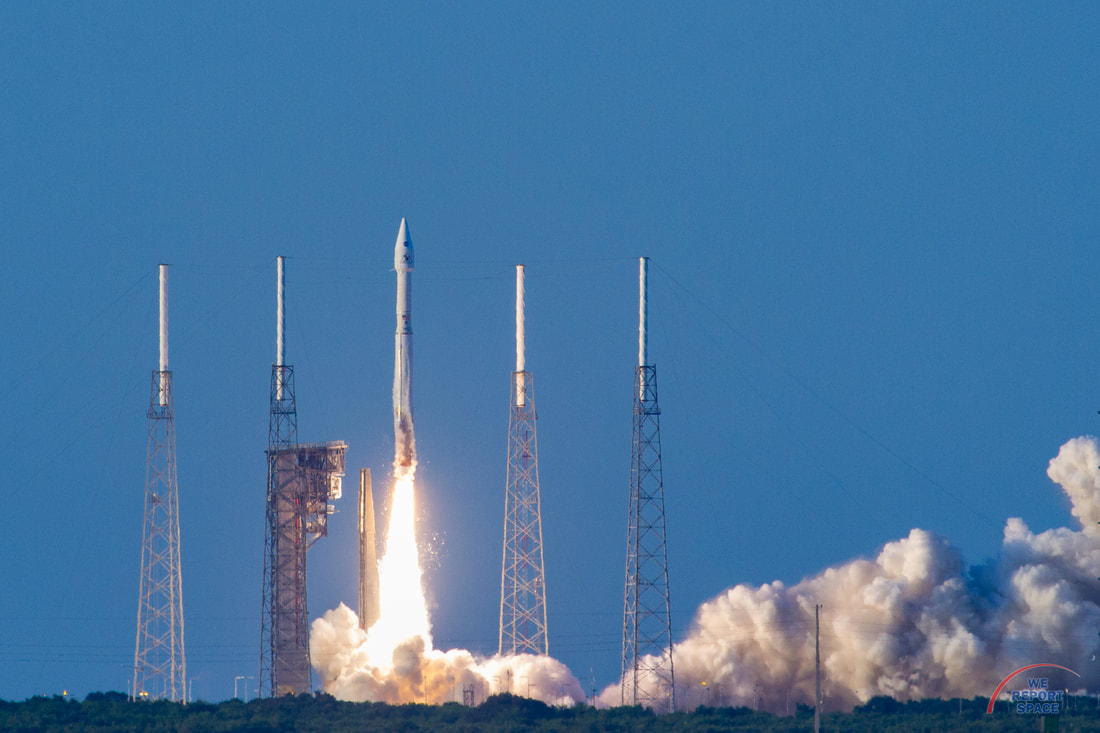Asteroids: A Path to Understanding the Origins of Life and Obtaining New Resource Supplies11/22/2020 Written by Michelle Lu The historic collection of a surface material sample from the near-Earth asteroid Bennu by NASA's OSIRIS-REx spacecraft on Thursday, October 15 was almost too successful: NASA scientists found out that while a substantial sample was collected, there was so much material that the flap designed to keep the sample inside was jammed, allowing particles to escape into space. The team is planning on stowing the sample as quickly as possible although some will have inevitably been lost by the time of Osiris-REx’s return in 2023. Before we get into the discussion about Bennu and OSIRIS-REx, though, let’s talk about asteroids and why they matter! Asteroids are small, rocky remnant debris that orbit the Sun; they originate from the early formation of our solar system about 4.6 billion years ago. They are relatively irregular in shape, as they do not have enough mass to have a similar shape to traditional planets such as the Earth. Scientists theorize that during the early solar system, the carbon-based molecules that served as the building blocks of primordial life (fat, carbohydrate, nucleic acid, and protein) The exploration of asteroids is not new: NASA's Galileo mission was the first spacecraft to fly past an asteroid (Gaspara) in 1991, and the European Space Agency Rosetta mission encountered Steins in 2008 and Lutetia in 2010. In 2005 the Japanese spacecraft Hayabusa landed on the near-Earth asteroid Itokawa and attempted to collect samples of asteroid surface material for the first time in human history. On June 3, 2010 Hayabusa successfully returned to the Earth with a small amount of material that has been analyzed by scientists for the past few years. However, it failed to detach a minilander, MINERVA, onto the surface of Itokawa. Following that, Japan launched Hayabusa2 in 2014, another sample-return mission to the asteroid Ryugu. Hayabusa2 has already successfully deployed two rovers and a small lander onto the surface and is scheduled to return in December 2020. So why Bennu specifically? What can the precious sample from Bennu tell us? Unlike past NASA missions, where spacecrafts did not come into contact with target asteroids, the OSIRIS-REx mission aimed to collect surface material from one, just as Japan has done with its Hayabusa missions. Therefore, NASA scientists narrowed down their choices by considering asteroids’ proximity to earth, size, and composition. For a sample return mission like OSIRIS-REx, the most accessible asteroids are located between 1.6 AU and 0.8 AU (1 AU = the distance between the Earth and the Sun, or ~93 million miles). Of the 7,000 known Near Earth Objects (NEOs), only 192 had orbits that met these criteria. Then NASA scientists compared the size of these NEOs. Since asteroids with small diameters rotate more rapidly than those with large diameters, the ideal asteroid has a diameter larger than 200 meters so that a spacecraft can safely come into contact with it and collect a sufficient surface sample. Finally, they considered these NEOs’ chemical compositions. The most primitive asteroids are carbon-rich and have not significantly changed since they formed. These asteroids contain organic molecules, volatiles, and amino acids that may have been the precursors to life on the Earth. Therefore, getting pieces from these cosmic time capsules could help scientists better understand how life originated on the Earth. Of the 192 NEOs, Bennu has a ~500 meter diameter, is carbon-rich, and comes very close to the Earth every six years, giving it a high probability of being a target for exploitation in the near future. Furthermore, scientists are particularly interested in Bennu because of a phenomenon called the Yarkovsky effect, a process whereby sunlight warms one side of a small, dark asteroid and then radiates as heat off the asteroid as it rotates. The heat energy thrusts an asteroid either away from the Sun, if it has a prograde spin like the Earth, which means it spins in the same direction as its orbit, or toward the Sun in the case of Bennu, which spins in the opposite direction of its orbit. OSIRIS-REx will measure the Yarkovsky effect from close-up—the first time that a space mission has done so—as this will help scientists predict the movement of Bennu and other asteroids. Meanwhile, the Japan Aerospace Exploration Agency (JAXA), who was the first to collect a sample of an asteroid’s surface material during the Hayabusa mission—is already awaiting its second batch of samples taken from a different asteroid, Ryugu, due back in December carried out by Hayabusa2. Similar to Bennu, Ryugu is also a primitive carbonaceous asteroid that contains hydrated minerals and organic molecules. Although researchers couldn’t directly study the material from Ryugu just yet, they used imaging instruments to look at dusty matter kicked up by the spacecraft's engines during the touchdowns, and discovered large amounts of fine grains of red minerals. Researchers believe that these were produced by solar heating, suggesting that Ryugu must have passed close by the sun between a few hundred thousand and several million years ago—and that the asteroid might be remarkably younger than previously predicted. However, the age estimates are far from certain. Researchers will be able to confirm Ryugu’s surface age once they test Hayabusa2’s samples this December. We still don’t know where life originated, whether on the Earth or elsewhere in the universe. However, by studying organic matter that has existed since the birth of the solar system, we will get a better idea of the factors that influenced the early Earth, and map out the future of the human supply chain.
0 Comments
Leave a Reply. |
Categories
All
Archives
April 2024
|

